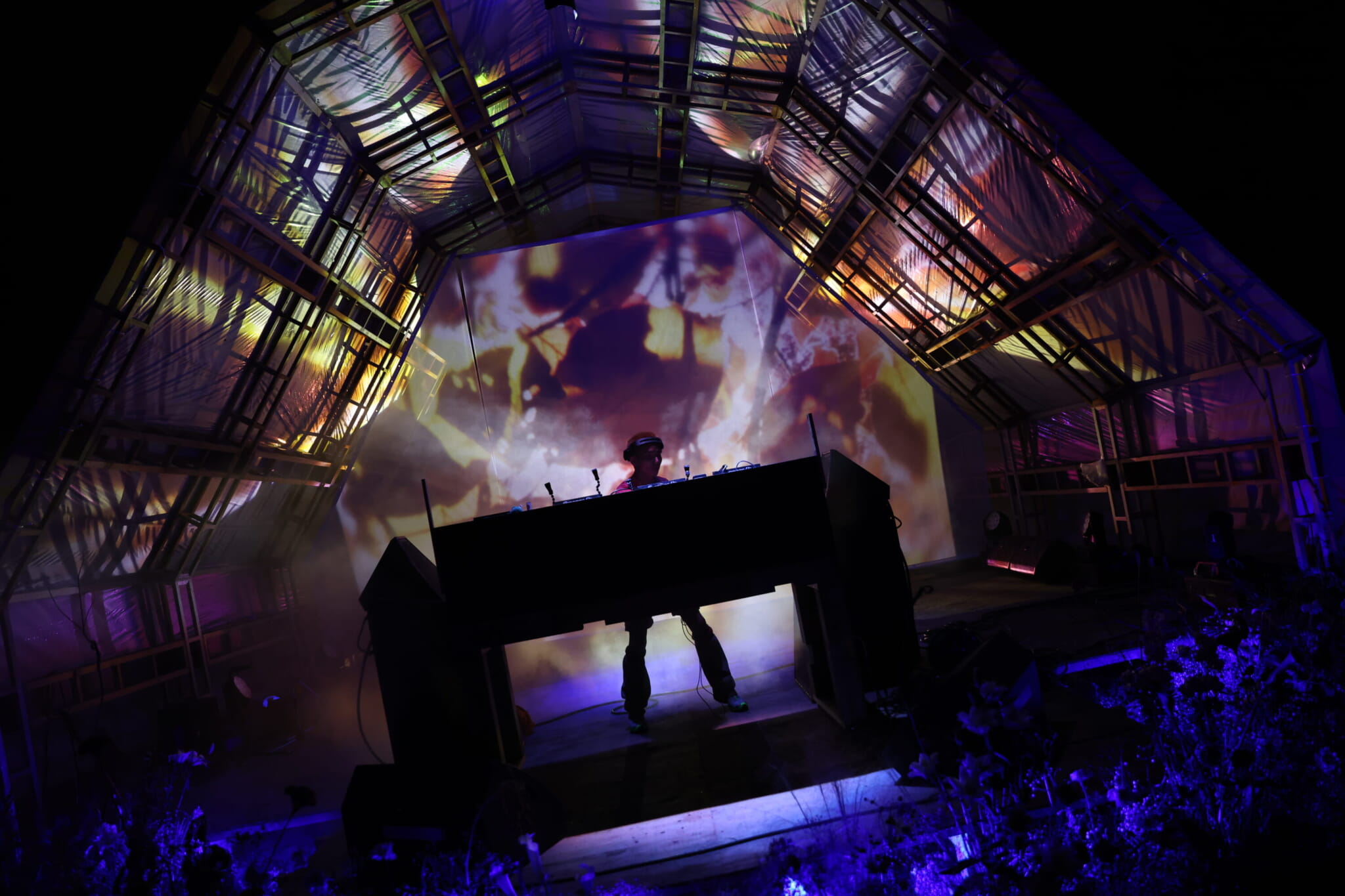Having attended over 50 festivals in the past 15 years, I consider myself somewhat a festival veteran. Every year, I say, this will be my last. The festivals blend into one: a haze of music, mediocre food, lights and mud. Of course, each year I return, addicted to the buzz that arises from three days in the wilderness, surrounded by friends old and new, music, trees and occasionally a beach. But Ishikawa Prefecture’s Ishinoko was different.
The festival had us all going. How on earth was it so right? A ramshackle affair to say the least. What it was lacking was arguably more than it had. The festival infrastructure was basically non-existent, the shuttle buses were late, if they came at all, and the campsite had no lights. But the atmosphere, the arts and the food — especially the food — were fantastic.
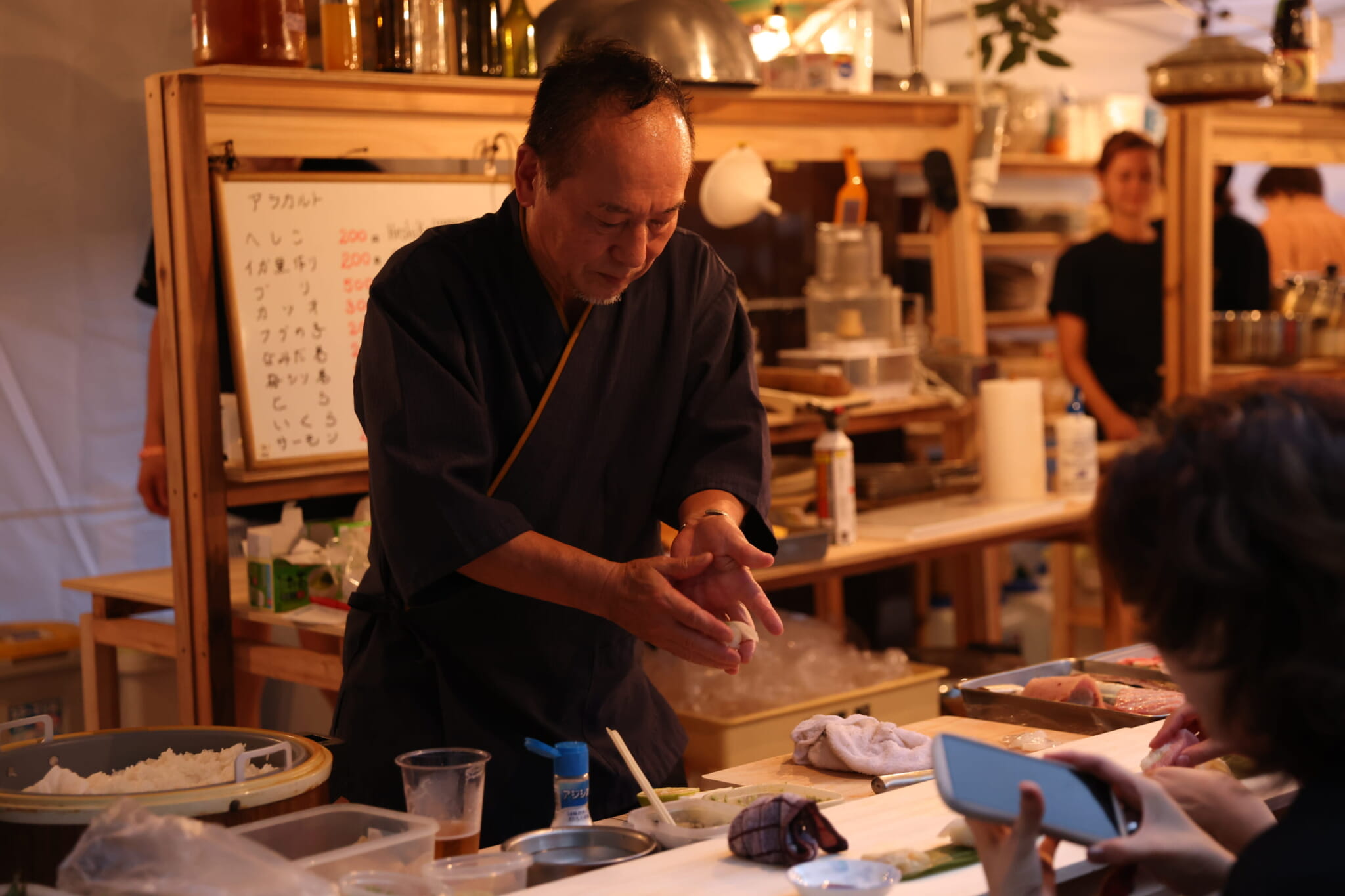
Sushi
Quality Over Quantity
We arrived in the cover of darkness, late into the first day. Walking up from the shuttle bus, we were picked up by a van with the passengers calling out: “You can’t walk here, there are bears.” Bewildered, we jumped in and sat until we reached the site in a matter of moments. It was a Friday but already it was bustling with activity. There were children, adults and a big black Labrador.
In comparison to other similar music festivals, the site itself was tiny, arranged in a linear fashion. The modest campsite was connected to the kitchen and eating space that led onto the stage. There were also shops and an experience zone. The lack of signs made things difficult, particularly for those staying in the hostel. Whether or not you were heading the right way was pure luck.
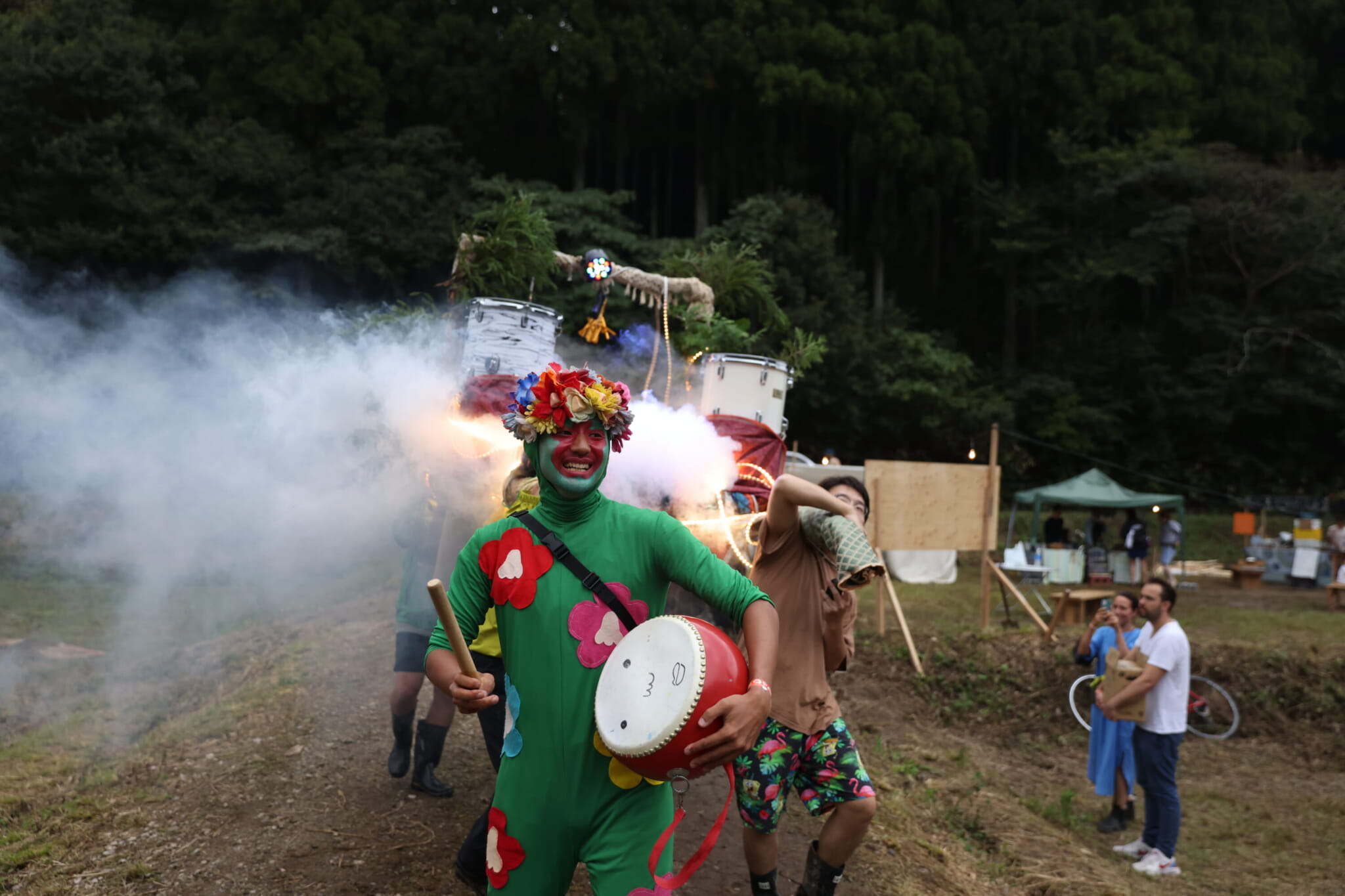
Hanaguts
Two Main Floors
The dance floor had a Funktion-One loudspeaker stack in each of its four corners. In the middle of the floor was a small, raised platform. The platform bore witness to a myriad of impromptu performances throughout the festival.
The other main floor was the food floor. As any seasoned festival goer will know, we put up with expensive, very average food because “it’s a festival,” and that’s OK. In Japan, the festival food offering generally consists of some sort of noodle dish, the occasional hamburger and the odd taco or curry. Ishinoko, though, was on a different level. The food timetable was as important as the music schedule.
Rumors flew around about the chefs you simply had to catch. Rishiraj was the chef who’d flown all the way from India, bringing new and exciting spices with him. A must-eat, he closed out the final night. The sushi counter courtesy of Nimaida was already fully booked as we arrived with happy customers proclaiming the delights of having such an impressive selection “at a festival.”
Even though experiences like the sit-down sushi and insect tea took time away from the music, the food area was close enough to hear whatever was happening on the stage. It didn’t feel like you were missing out on anything.
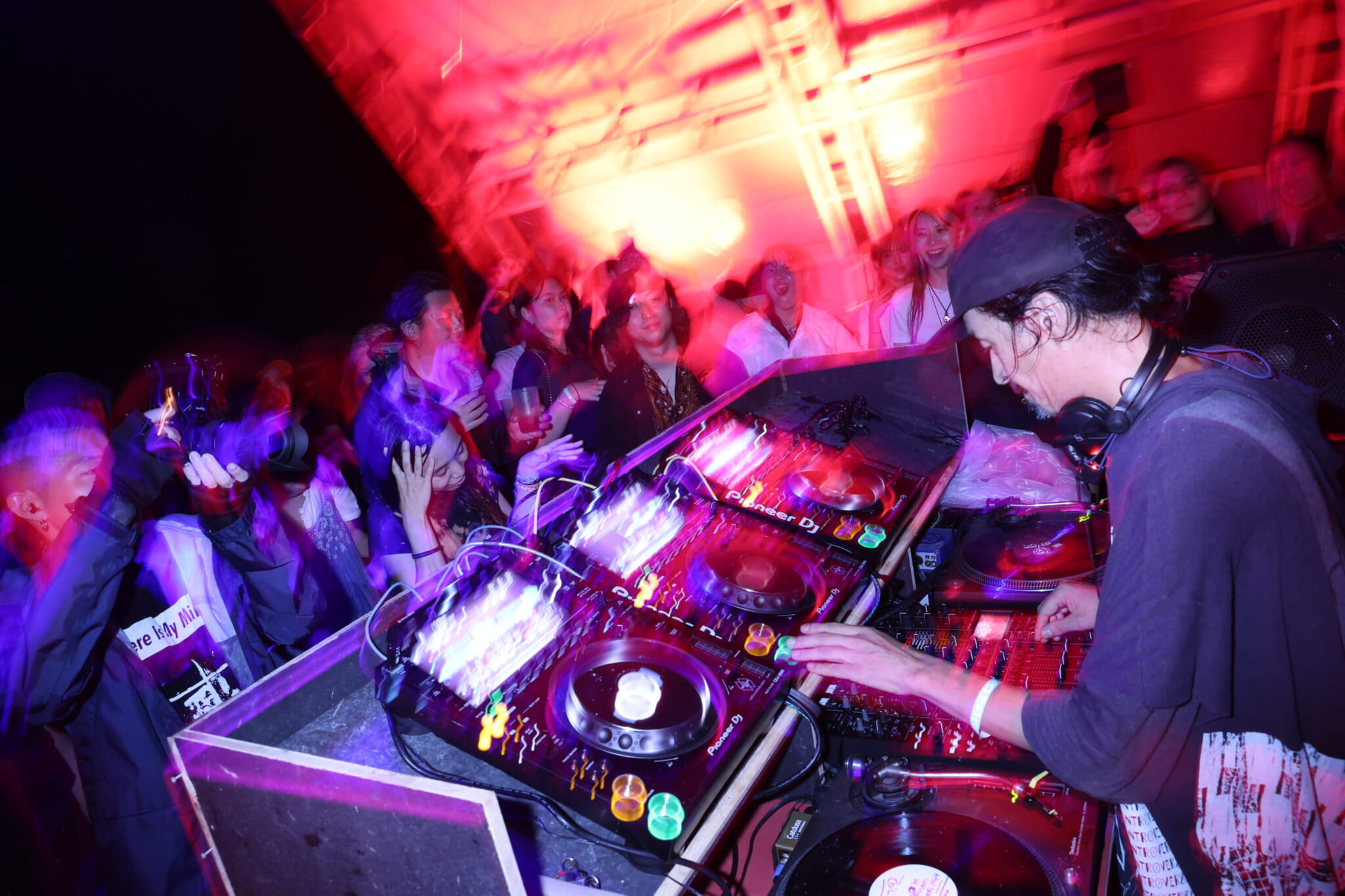
DJ Bing and Antibodies Collective
Music Highlights in the Rain
When the heavens opened on the second night, everyone crowded under the two hastily built shelters on the food floor while listening to Foodman’s set from afar. Any souls brave enough to venture through the downpour were invited onto the main stage itself, to join the oddball electronic artist’s musical cooking pot, sheltered under the stage roof.
The musical highlight of the weekend arguably came next from Kyoto-based DJ Bing, accompanied by the experimental dance group, Antibodies Collective. They ignite audience participation through their concept of “free circulation.” Inviting the crowd back onto the stage, the dancers strutted their stuff atop monitor speakers, juggled arms with audience members and passed shimmering silver foils around the stage.
It quickly changed from a dance floor to a dancers’ coven, bringing everyone together as one, with DJ Bing at the helm. It was all or nothing, as everyone crowded together to escape the rain.
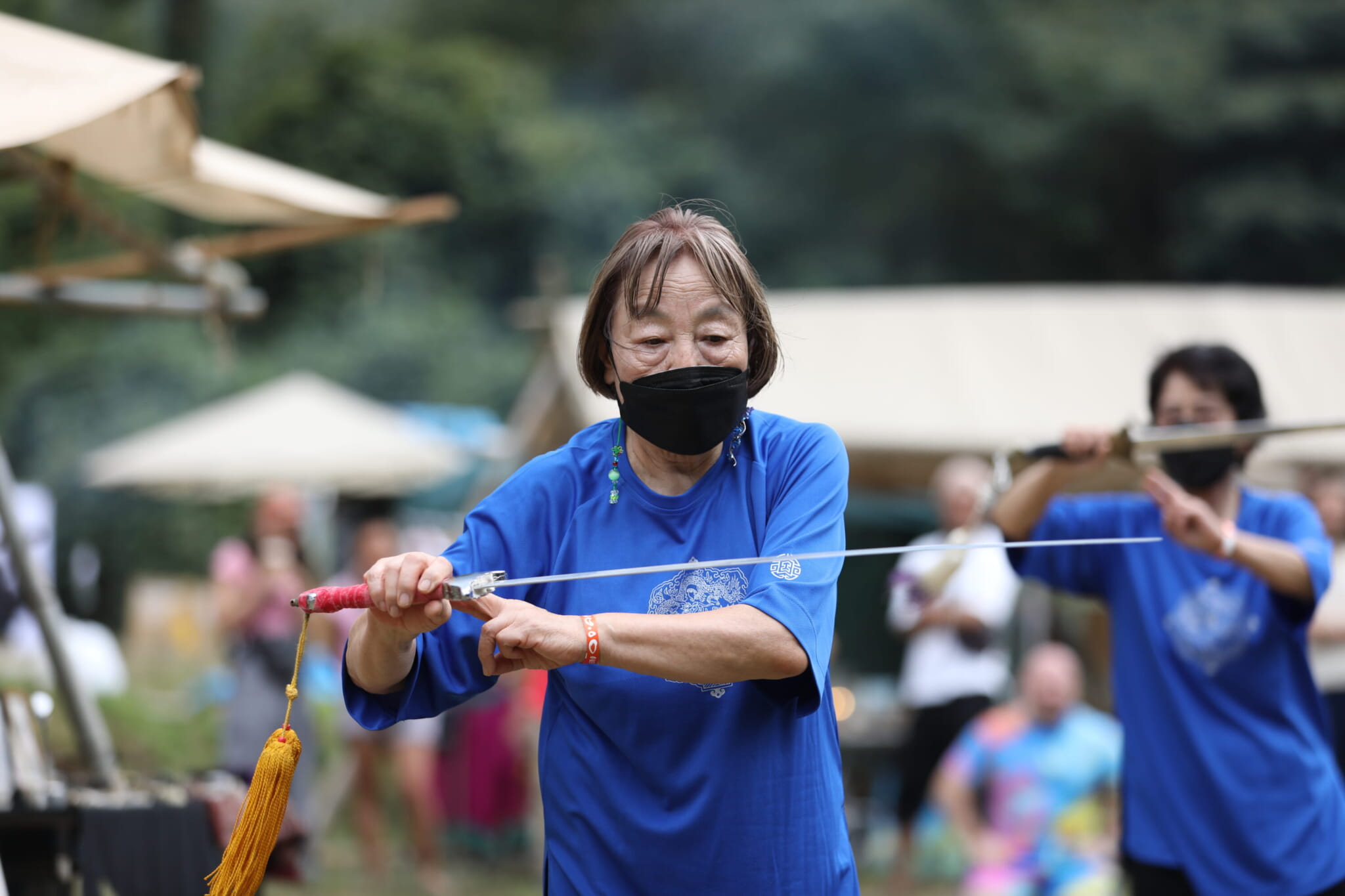
Tai Chi Performance
Sunshine and Silliness
The final day heralded sunshine and some exercise routines courtesy of the dancer and expressionist Hanaguts. Bowling around the festival each day with a green and red face, he popped up to do spontaneous “performances,” including some genuinely impressive breakdancing. The exercises were silly, soundtracked by custom beats as he directed the audience into jumps and punches. It was a wake-up call we didn’t know we needed.
His routine was followed by Calpiss, a Tokyo vagabond who specializes in after-parties. Ali, whom everyone seemed to know well, brought all his records and played a sunshine jazz set. He gradually became more and more inebriated as his mix went on, as staff and fellow performers alike brought a steady stream of drinks. By the end of his allotted time, everyone watching knew it was his birthday. Some hours later, he was found sleeping in the cooled-down tent sauna near the river. A happy birthday boy.
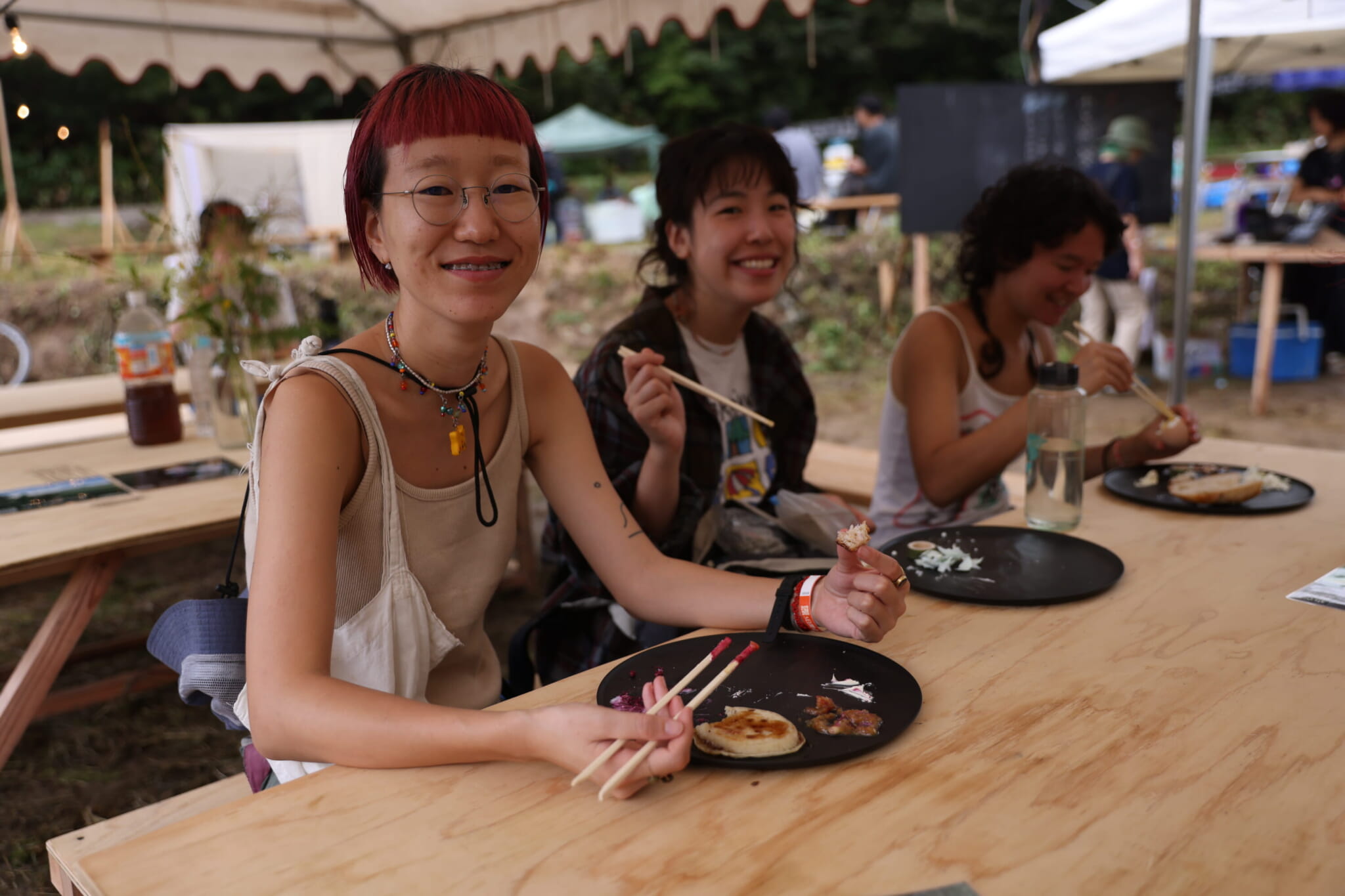
The Food Stage
We listened to half of Devon’s set while enjoying the breakfast plate to end them all from Marius. It would’ve gone down well in a café in Tokyo for at least a ¥1,500, but at Ishinoko it was only ¥700. There were two options: sweet and savory. The sweet had the young chef’s homemade sourdough bread, crumpet, pinecone syrup, persimmon jam, yogurt and more. Very impressive from someone who is actually an architect by trade.
Later, it was time for Rishiraj’s Indian food. This was like no other Indian cuisine in Japan. Billed as a fermented rice cake, a semi-hard, lavender-tinted dish was the texture of Play-Doh and bizarrely delicious. We enjoyed all that while watching Kyoto’s ambient and ice techno crossover act, EOU.
At Ishinoko, we were part of something special, heralding a new type of festival, where music, performing arts and food come together as one, no matter how chaotic that may be.
Find out more about Ishinoko and the other projects at the site.
*Note that the photos have not been edited.
Updated On October 30, 2023

